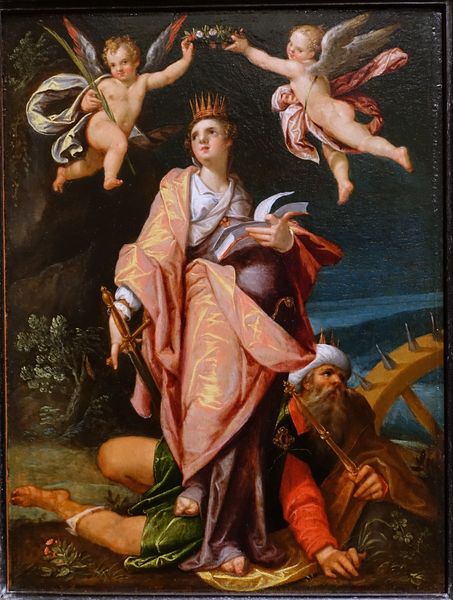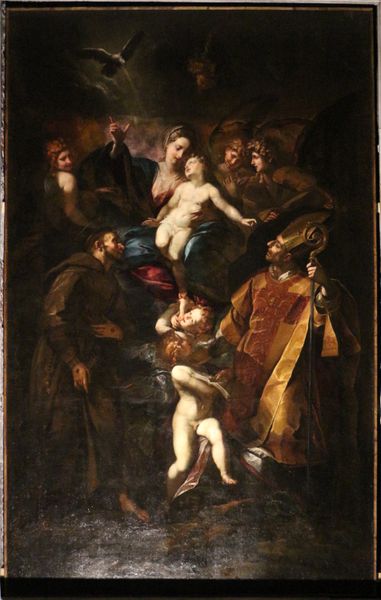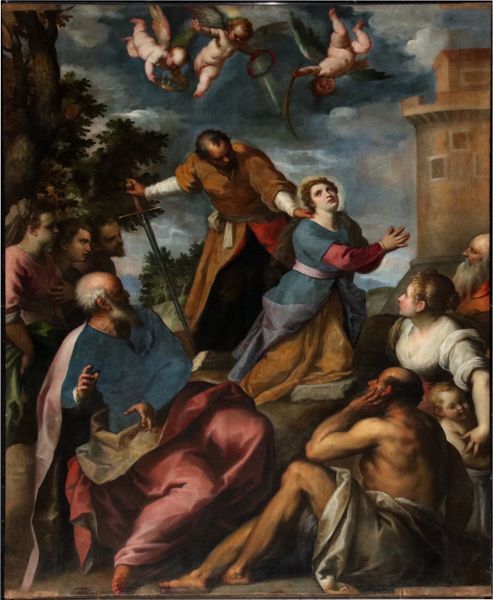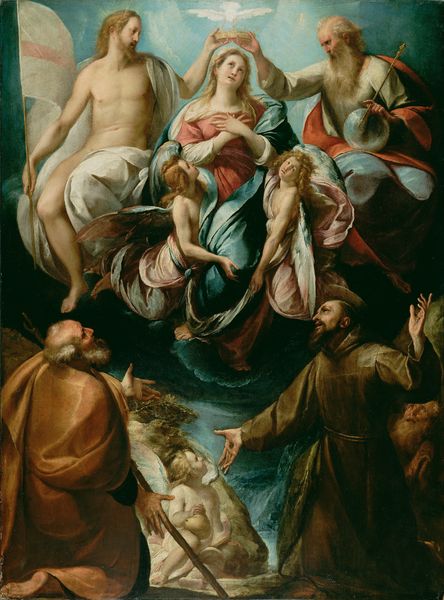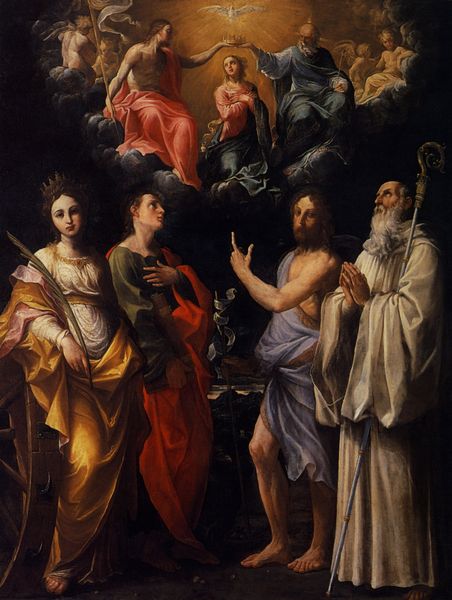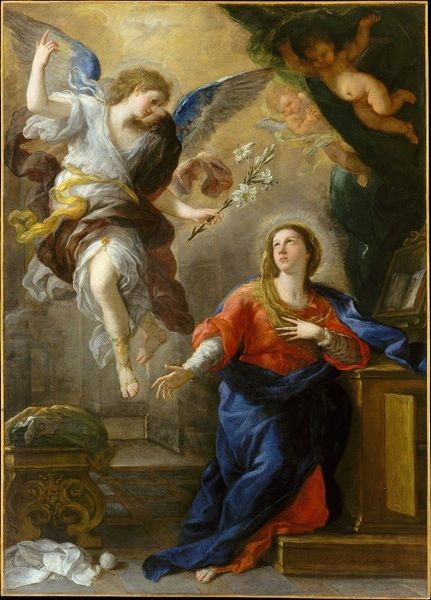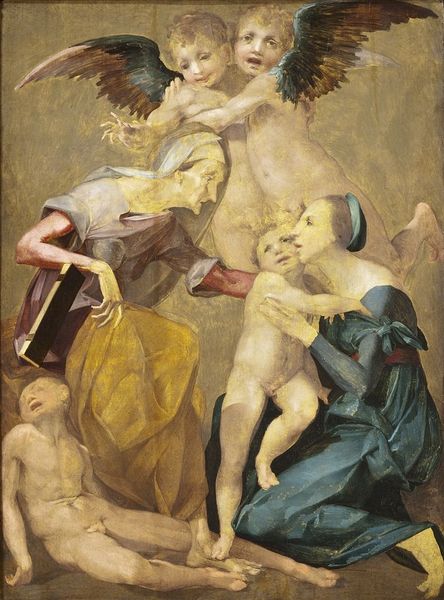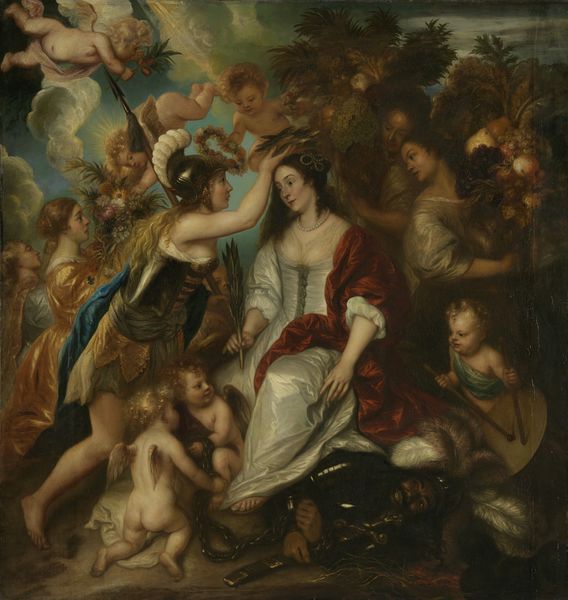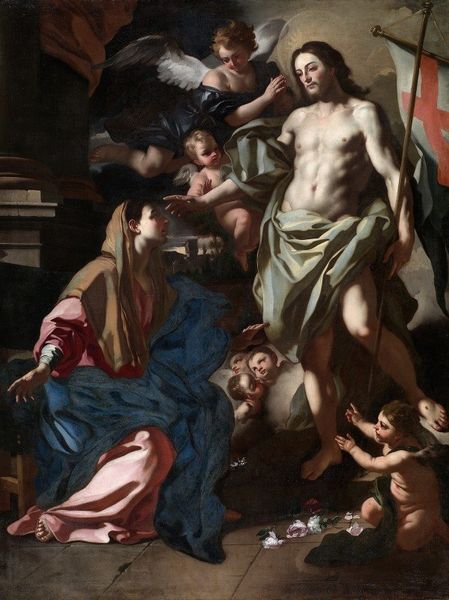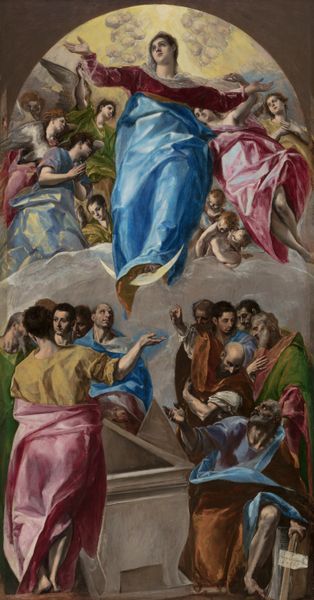
painting, oil-paint
#
portrait
#
painting
#
oil-paint
#
mannerism
#
oil painting
#
history-painting
#
portrait art
Copyright: Public domain
Editor: Here we have Bartholomeus Spranger's "Saint Ursula," an oil painting created in 1583. The swirling figures and somewhat theatrical poses give it a very dramatic feel. How do you interpret this work, considering the social and historical contexts? Curator: This Mannerist piece invites us to think about the construction of female martyrdom within the socio-political landscape of the late 16th century. Spranger presents Ursula not just as a saint, but as a leader surrounded by her devoted, and ultimately doomed, followers. How does the artist's depiction of power dynamics strike you? Do you find it empowering or does something else emerge? Editor: Well, she definitely appears to be in charge, regal even, with her crown and protective stance. But there’s also a sense of inevitable tragedy hanging over them, knowing their fate. Does the style of Mannerism lend itself to this type of dramatic, even propagandistic, storytelling? Curator: Absolutely. Mannerism, with its exaggerated forms and emotional intensity, became a potent tool for the Counter-Reformation. Think of the emphasis on emotional fidelity over accurate observation, a powerful means for conveying spiritual conviction and reinforcing the doctrines and narratives deemed central to religious power at the time. How might the male gaze inherent in the production of this image influence our reading of Ursula’s power, considering the context of limited agency afforded to women during that period? Editor: That's a perspective I hadn’t considered fully. I see your point about the male gaze potentially shaping our understanding of Ursula’s agency, presenting a vision filtered through the expectations of the time. This painting is less a pure celebration of female strength, and more a constructed narrative designed to reinforce certain social roles within society, like piety, and obedience. Curator: Precisely! By deconstructing these historical portrayals, we can better understand not just the artwork, but also the ideological forces at play that continue to inform our perceptions of identity and power. Editor: Thank you! I am now approaching "Saint Ursula" with a new sense of criticality, considering questions about gender roles.
Comments
No comments
Be the first to comment and join the conversation on the ultimate creative platform.
